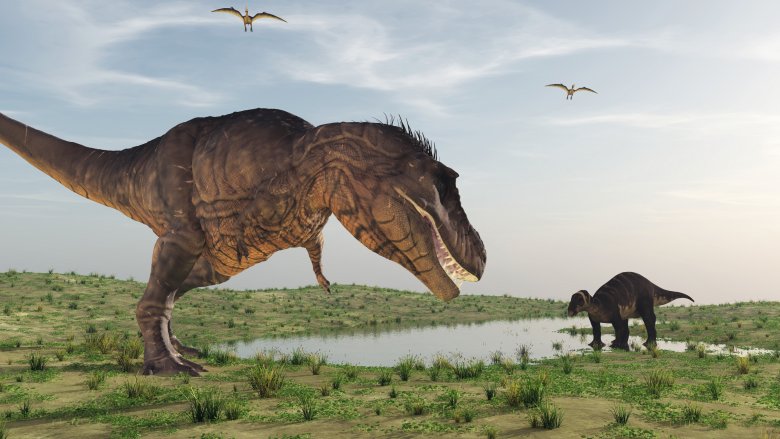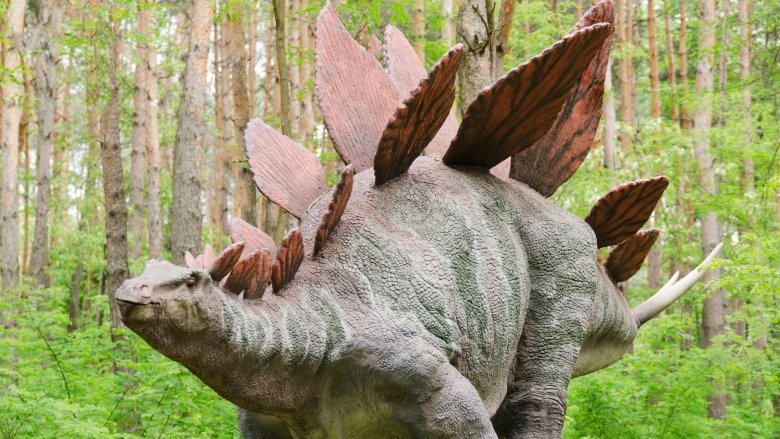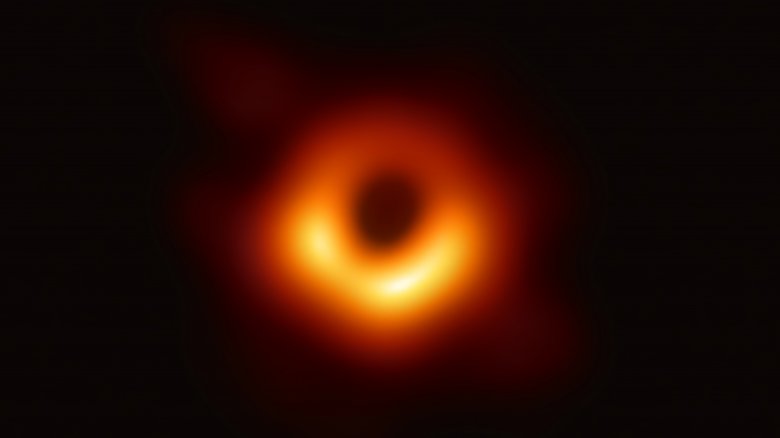Mysteries That Scientists Can't Even Explain
In 1966 hilarious prankster and Nobel Prize-winning physicist Richard Feynman spoke to the National Science Teachers Association. The topic: What is Science? Feynman, a famously out-of-the-box thinker, didn't give a definition — he described a process. He told attendees how he learned to do science, giving a detailed overview of formative experiences and underscoring their intellectual value. One of the patterns that emerged is that a mystery can be more valuable than the solution.
When introduced to the mathematical concept pi, Feynman couldn't comprehend it. "But this was a great thing," he said, "and the result [was] that I looked for pi everywhere." When trying to determine why birds pecked at their feathers, he guessed wrongly, but his father revealed the true answer, and Feynman learned something new. And so "the point of this is that the result of observation, even if I were unable to come to the ultimate conclusion, was a wonderful piece of gold, with marvelous results."
With that in mind, read this article with an invisible asterisk, partly because scientists may solve some or all of these mysteries one day — maybe today! But more importantly because failing to solve these mysteries is a journey of discovery in itself.
Does the Great Pyramid void contain an iron throne?
Iron thrones might be a painful subject for Game of Thrones fans who wanted to dracarys all over the final season. But this isn't about that show. It's about the disagreements and intrigue surrounding a world of mythical creatures and monarchs. That world, of course, is ancient Egypt. Where does the iron throne fit in? It might sit inside what archaeologist Yukinori Kawae called "the discovery of the century." Hidden within Giza's Great Pyramid is what seems to be an enormous void — potentially a chamber — that's at least 100 feet long and situated over a long conduit called the Grand Gallery that leads to the burial chamber of the pharaoh Khufu. Scientists detected the void in 2017 using muon radiography, which tracks the motion of subatomic particles called muons.
Archaeoastronomy professor Giulio Magli told Newsweek that the void may contain an iron throne mentioned in the ancient Pyramid Texts. Sitting in it supposedly opened the gates to the afterlife. However, skeptical Egyptologists have argued that the "void" is likely a construction gap believed to be typical of pyramids. And Egyptologist David Lightbody claimed that scientists may have detected two smaller gaps that create a muon-driven illusion of vaster emptiness. Robot-mounted cameras may resolve the matter, but as Live Science described, that would entail drilling holes in the pyramid, and researchers would need permission from the Egyptian government.
What's up with Martian blueberries?
Is there life on Mars? Not even the great David Bowie could answer that question, so good luck, scientists. And if they are lucky, the solution to a different Martian mystery may shed some light. As Space.com detailed, in 2004, NASA's Opportunity rover encountered "a geological curiosity" on Mars: "tiny, iron-rich spheres" near its landing spot. Scientists called them blueberries (and hopefully formed a heavy metal band called "Iron Blueberry").
Researchers theorized that these foreign orbs were accretions of hematite (iron oxide) — in other words, they thought hematite gradually accumulated as water passed through rocks. Indeed, the Red Planet was once a wet planet, but Gizmodo noted that multiple space-ologists have rejected the accretion theory because the blueberries' don't resemble the kinds of accretions seen on Earth. Whereas Earthly accretions have irregular shapes and sizes, Martian blueberries are "nearly perfectly spherical," extremely similar in size, and way smaller than Earth's accretions.
Researchers in Japan hypothesized that the blueberries formed as acidic water washed over calcite formations, with hematite collecting around the calcite. But this also assumes — perhaps wrongly — that Martian blueberries are comparable to geological formations on Earth. If the assumption proves true, then determining the water's chemistry via the blueberries could yield clues about Mars' habitability. But testing that notion might require returning to the original blueberry site, which seems unlikely.
Why do some animals have self-destructive mating behaviors?
As Nazareth would say, "Love hurts, love scars, love wounds," and for some animals those wounds are fatal. Such animals are "semelparous," meaning they die after a single bout of baby-making. Take, for example, the antechinus (above), an adorable mouse-like marsupial that lives in Australia. When a male antechinus gets naughty in the Land Down Under, he gets naughty for up to 14 hours, per National Geographic. As he maniacally thrusts away, his fur falls off, his innards bleed, and he gets gangrene. Even the flesh berries attached to his love twig disintegrate.
Scientists have spent decades trying to understand this behavior. Competing theories include that males are sacrificing themselves to leave resources for future generations; that there's not much time to reproduce, so they strategically screw themselves over competing; and that evolution is just weird sometimes. You might think such self-destructive behavior is a product of living in the animal-themed Saw movie that is Australia, but octopuses — which live all over the world — also die awful deaths after reproducing.
UChicago Medicine explained that female octopuses often eat their male partners, who would soon die even without the Dahmer-esque pillow talk. After laying eggs the females starve themselves to death. Occasionally, captive females rip off their own skin and eat the tips of their tentacles. Experts speculate that it could be evolution's way of keeping mothers from eating their young, but maybe all female octopuses are Australian.
How on Earth did a baby volcano cause a global 'seismic hum'?
Oftentimes, when a seismograph's a-knockin, then the Earth is a-rockin,' and people are a panickin.' But in November 2018 a seismic hum rumbled across the world and almost nobody batted an eye. As National Geographic described, these weird seismic waves persisted for over 20 minutes and spanned almost 11,000 miles, but the frequency was too low for humans to notice on their own. Geologists caught wind of it and were blown away by what they eventually uncovered.
That seismic hum coincided with another geological oddity. This time people did panic, specifically the people living on the French island of Mayotte. Since May 2018 they've felt more than 1,800 small earthquakes. And as it turns out, the November hum originated near Mayotte. Based on preliminary research, these two sets of events seem to be connected through a third strange occurrence: the birth of the largest underwater volcano ever recorded. Seismologist Stephen Hicks explained, "the million-dollar question" is, how are these three phenomena related? And that's not the only question. Volcanologist Ken Rubin told Live Science that it's odd that a volcano even formed near Mayotte, which is the oldest island of an archipelago that hasn't seen volcanic activity in thousands of years. Researchers also aren't sure if Earth grew a brand new lava fountain or if it formed atop an older volcano.
Where on not-Earth is Planet Nine?
Fans of the animated series Where on Earth is Carmen Sandiego? (or the related game/game show) probably learned that you can locate a super-elusive target by following the available clues. It might take a few thousand geography lessons, but in the end you'll find the target wherever the evidence said it is. However, Planet Nine doesn't play by those rules.
You might be thinking, "Planet Nine — did we get Pluto back?" No, Pluto is still reclassified as a dwarf planet. According to NASA, if there is a ninth planet, it's "perhaps 10 times the mass of Earth" and located in an icy region beyond Neptune known as the Kuiper Belt. Planetary astrophysicist Konstantin Batygin has insisted this is a very small "if" — presumably a dwarf "if." A whopping five lines of observational evidence point to the existence of a ninth planet in our solar system that's influencing the orbits of objects in the Kuiper Belt. So if there's no planet, there are potentially five different mysteries to resolve.
However, Occam's Razor does not a planet make. The observational evidence is indirect, and some astronomers have espoused the alternative theory that a cluster of objects with the collective mass of a planet is what's really affecting orbits in the Kuiper Belt. But "it's almost impossible to see the whole [cluster] all at once."
What are dark energy and dark matter made of?
We are such stuff that dreams are made of, which might explain why we aren't made of dark matter and dark energy. Never in our wildest dreams would most of the universe be made of that stuff, yet it is. We say "stuff" because we don't know what dark energy and dark matter actually are. Nobody does. But whatever they are completely upended physicists' perception of the universe.
1998 was the year everything turned downside up. Until then, experts believed "gravity was certain to slow the expansion [of the universe] as time went on," according to NASA. Then Hubble burst their bubble. Observations from the space telescope revealed that the expansion of the universe was speeding up, the exact opposite of what physicists predicted. All sorts of educated straw-grasping followed. Did Einstein get gravity wrong? Did space contain some unknown "energy-fluid?" Clearly in the dark, scientists assigned a rather fitting name to the substance they still can't explain: dark energy.
Then there's dark matter, which is largely defined by what it isn't. It doesn't have the properties of normal matter or antimatter or black holes for that matter. And it's dark — as in not visible. Roughly 68 percent of the universe is dark energy, 27 percent is dark matter, and the last 5 percent is normal matter — the stuff we're made of.
Why do more species live near the equator?
In 1807 Alexander von Humboldt — hailed by Cosmos as "the father of environmental science" — published a book of essays wherein he said — and we're paraphrasing — life sucks more for organisms in "frigid zones" than in the tropics, where wider varieties of "organic life" thrive. In the centuries since, scientists have tried to explain this tendency, which is called the latitudinal diversity gradient.
Admittedly, any grandpa packing his bags for Florida could have told you that warm weather beats freezing. But that grandpa probably isn't a polar bear, whose species evolved to thrive in icy climates. The head-scratcher is that there are seven species of non-polar bear, three of which are found in southern or Southeast Asia and one of which lives in South America. That's not even the best example. Per a 2011 Guardian article, over 3,300 bird species breed in the Neotropics versus around 730 species in the Nearctic. But why?
Scientists have attacked the problem from many different angles. A 2018 paper in Nature grouped these theories into three main categories, which can roughly be summarized as 1) habitats closer to the equator are better suited to sustain more species, 2) species evolve faster at the equator, or 3) colder climates haven't been around as long, so the creatures living in them have had less time to evolve. In short, scientists aren't sure.
What caused the space 'cow' explosion?
Have you ever wondered what sounds the intergalactic versions of Earth's animals would make? Maybe alien ants would sing rock covers of Queen songs and space dogs would bark like John Candy. And space cows — they'd go boom. At least that's what the "Cow" did. Granted, this Cow wasn't a cosmic bovine but a moribund star located 200 million light-years away. Its full name, which was randomly generated, is AT2018cow. But let's just pretend it's a real cow. And now let's mourn that cow because it exploded, flinging ground beef across the cosmos.
The explosion "shone with the light of 100 supernovas," per Live Science, and the flash reached Earth in 2018. From the get-go it was clear that whatever astronomers were witnessing was "super weird." It didn't produce the amount of debris one would expect from a supernova, per National Geographic, and the glow from the explosion unexpectedly brightened a week after it first appeared. In fact, it remained bright for almost three weeks, according to Science. Cow also emitted radiation in strange ways that implied the presence of a central power source surrounded by "an asymmetric blob of material." The potential explanations for what it is each have shortcomings, but the candidates include a black hole birth — which has never been observed before — a newborn neutron star, and an unusual supernova.
How did dinosaurs make love?
Isn't it weird that humans call human procreation "the birds and the bees"? It creates a confusing image of people stinging each other's brains out and hatching babies. The idiom would be better used on dinosaurs. Except, instead of the birds and the bees, it could be the birds and the crocodiles.
As Smithsonian explained, dino dongs are sorely lacking in the fossil record, so scientists have tried to piece together the ins and outs of dino reproduction by looking at animals that are evolutionarily related. Based on bird and crocodile anatomies, paleontologists have inferred that dinosaurs had a fancy orifice called a cloaca. But not all cloacas are created equal. For example, across most bird species the males don't have peckers, but ducks have long, ridiculous-looking ones.
A 2006 estimate suggests that more than 1,850 dinosaur species once roamed the Earth, so exploring all the possible variations in carnal hardware sounds like an exercise in futility. Experts don't even completely agree on how to distinguish male and female dino bones. Moreover, NPR pointed out that the sharp spikes, large tails, and massive bodies of some species would have made mating complicated. We can only hope that T. rex exchanged tiny-armed caresses while a saxophone-toting velociraptor played a sensual rendition of the Jurassic Park theme.
What happens to matter inside a black hole?
In 2019, the worlds of fantasy and science collided in visually stunning fashion when astronomers published the first ever image of a black hole. Jessica Dempsey, who co-discovered the hole, noted its striking resemblance to the Eye of Sauron from the Lord of the Rings series. Before long Twitter was aflutter and humanity finally realized how precious yet sinister black holes are. It's fitting that these cosmic oddities would look like a supernatural eye because their inner workings sound a lot like arcane sorcery.
Black holes are the endlessly dark, "infinitely dense" remnants of collapsed stars. They possess such an intense gravitational pull that nothing — not even light — can escape once it enters. But what happens to the matter trapped inside? What would happen to you if you entered a black hole? Besides becoming the apple of Sauron's eye, no one can say for sure. What we can say is that objects caught in a black hole get condensed to an "infinitely small point" known as a "singularity," at which point the laws of physics "break down and we don't really know what happens." One theory holds that black holes spit matter across space at some point "in the future," but a pair of papers published in 2018 acknowledged that physicists may have "completely misunderstood" black holes.
Why do some people experience phantom limb pain?
Thanks to George Lucas and George R. R. Martin, many people associate amputations with one-handed sister-kissers like Luke Skywalker and Jaime Lannister. Of course, after Luke lost his lightsaber hand, he got a nifty mechanical replacement and called it an episode. And Jaime — ew, just ew. Anyway, back to Luke, who really got lucky because his severed hand could have easily become a phantom menace, causing pain that seemed to emanate from where his real hand used to be. Even luckier, he's a fictional character.
Sadly, phantom pain isn't fiction. It's very real, sometimes agonizing pain that affects very real people. It can strike days or months after an amputation, manifesting as a stabbing, shooting, burning, or even crushing sensation. This differs from phantom limb sensation, which is painless, according to the Mayo Clinic. Despite advances in research, "phantom pain is a poorly understood phenomenon," per Chalmers University of Technology.
Generally speaking, it seems that after losing a body part, neurons related to that part can get rewired in adverse ways. Dr. Max Ortiz Catalan has argued that the random firing of neurons could link the nerve cells once related to an amputated area to nerve cells related to pain perception. Based on that premise, he has developed a so-far fruitful way of treating some sufferers.
Wheat really killed off the dinosaurs?
To misquote Dr. Ian Malcolm, 'Life, uh, finds a way until it, uh, doesn't." And 65 million or so years ago, life lost its way for the dinosaurs. For seemingly eons humans have racked their brains trying to discern exactly what wiped out them out, and competing explanations have ranged from the astute to the asinine. On the sillier end of the spectrum was the gross notion that dinosaurs died of constipation, the reasoning being that the rise of flowering plants precipitated a shift in eating habits and that dinos couldn't digest flowers. Obviously, that's nonsense because flowering plants emerged 60 million years before dinosaurs went extinct and anyway, not pooping would technically mean going ex-stink.
The most popular theory holds that a massive asteroid rained oblivion onto our favorite future fossils. But even this theory has doubters in the scientific community. Per National Geographic, some paleontologists are of the mind that dinosaurs would have gone extinct even without the cataclysmic nudge of an asteroid, with many species having vanished "tens of millions of years before" the cosmos dealt the final death blow. But even if we stick to the asteroid explanation, the question remains whether another catastrophe, such as gigantic volcanic eruptions, played a major role. Research published in 2019 suggests that the asteroid impact triggered such eruptions in India, which could have created an unlivable atmosphere.












